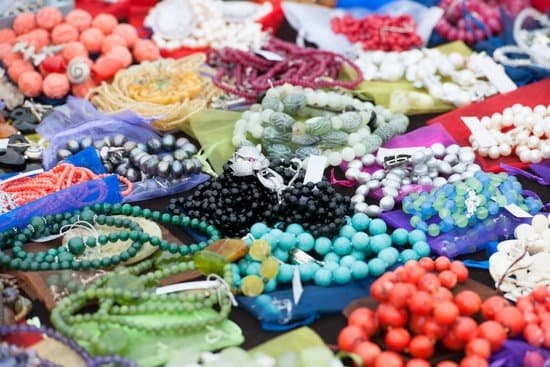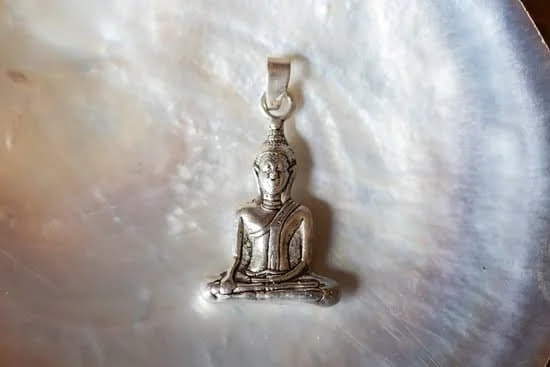How is handmade jewelry made? Handcrafted jewelry has been gaining popularity for its unique and one-of-a-kind quality, making it a sought-after alternative to mass-produced accessories.
From the history of handmade jewelry to the design process and production techniques, there is a fascinating artistry behind each piece that sets it apart from commercially manufactured items. In this article, we will explore the intricacies of creating handmade jewelry, from the materials used to the techniques involved in the crafting process.
The appeal of handmade jewelry lies in its authenticity and individuality. Each piece carries with it the personal touch and creativity of the artisan, making it stand out in a market flooded with standardized designs. Whether it’s wire wrapping, beading, or metalworking, each technique requires skill and dedication to master, resulting in handcrafted pieces that hold sentimental value for both the maker and the wearer.
Throughout history, cultures around the world have embraced handmade jewelry as an essential part of tradition and self-expression. From ancient civilizations to modern-day societies, these pieces have served as symbols of status, spirituality, and cultural identity. The materials used in creating handmade jewelry also reflect diverse cultural influences, showcasing a wide range of precious metals, gemstones, beads, and natural elements that add depth and meaning to each creation.
As we delve deeper into the world of handmade jewelry making, we will discover not only the intricate craftsmanship involved but also the importance of supporting independent artisans who contribute to preserving traditional craftsmanship while promoting sustainability. So join us as we uncover the artistry behind handmade jewelry and explore its unique benefits and significance in today’s fashion landscape.
History of Handmade Jewelry
Origins of Handmade Jewelry
The practice of crafting jewelry by hand can be traced back to the earliest human societies, where individuals adorned themselves with ornaments made from natural materials such as shells, bones, and stones. As communities evolved, so did the art of jewelry making, with different cultures developing unique styles and techniques that reflected their beliefs, traditions, and values.
Cultural Significance
Handmade jewelry has played a significant role in various societies around the world. In many cultures, jewelry was not only a form of personal adornment but also held symbolic and ceremonial importance. For example, in ancient Egypt, intricate handcrafted jewelry was buried with the deceased to accompany them into the afterlife. Similarly, indigenous tribes in different parts of the world created elaborate handmade pieces that served as expressions of identity and heritage.
The cultural significance of handmade jewelry extends beyond its aesthetic value, as it embodies craftsmanship, storytelling, and cultural heritage. The tradition of creating jewelry by hand has been passed down through generations, preserving traditional techniques and artistry. This historical context adds depth and meaning to handmade jewelry, making it more than just decorative accessories. Understanding the history behind these pieces adds an extra layer of appreciation for the skill and creativity involved in their production.
Materials Used in Handmade Jewelry Making
Creating handmade jewelry involves a wide range of materials, each one contributing to the unique and beautiful pieces that artisans produce. From precious metals to natural gemstones and other components, the variety of materials used reflects the creativity and skill of the maker. Here are some of the common materials used in handmade jewelry making:
- Precious Metals: Gold, silver, platinum, and other precious metals are commonly used in handmade jewelry. Artisans often work with these metals to create stunning pieces that can be passed down for generations.
- Natural Gemstones: Gemstones such as diamonds, emeralds, rubies, sapphires, and more are often incorporated into handmade jewelry designs. These natural stones add a touch of elegance and beauty to the pieces.
- Organic Materials: Many artisans also utilize organic materials such as wood, bone, shells, and pearls in their creations. These materials bring a unique and earthy quality to handmade jewelry.
It is important to note that high-quality materials play a crucial role in the process of making handmade jewelry. The use of top-notch materials ensures not only the durability of the piece but also its overall aesthetic appeal, adding value to each creation.
How Is Handmade Jewelry Made?
Handmade jewelry making involves intricate techniques combined with artistic skills and creative flair. Artisans masterfully combine various materials using different methods like wire wrapping, beading, metalworking, casting, soldering techniques like fusing or sweat soldering when making handmade jewelry. The dedication to meticulously craft each piece sets handmade jewelry apart from mass-produced accessories you find in stores.
Techniques of Handmade Jewelry Making
Handmade jewelry making encompasses a wide range of techniques that require skill, precision, and creativity. Artisans use various methods to turn raw materials into stunning pieces of wearable art. These techniques often involve intricate processes that showcase the artisan’s expertise and attention to detail.
Some common techniques used in handmade jewelry making include:
- Wire wrapping: This technique involves manipulating wire to create intricate designs and secure gemstones or beads.
- Beading: Artisans use a variety of beads, pearls, and other embellishments to create unique patterns and designs.
- Metalworking: This includes processes such as forging, soldering, and casting metal to form beautiful jewelry pieces like rings, earrings, and pendants.
Each technique requires specific tools and skills. For example, wire wrapping may involve the use of pliers, mandrels, and wire cutters, while metalworking requires hammers, torches, and shaping tools. Artisans often spend years honing their craft and mastering these techniques to create high-quality handmade jewelry.
The process of making handmade jewelry involves a great deal of creativity. Artisans draw inspiration from a variety of sources including nature, culture, fashion trends, and personal experiences. They carefully consider the design elements such as color combinations, textures, shapes, and proportions to bring their visions to life. This level of thoughtfulness sets handmade jewelry apart from mass-produced pieces as each item is crafted with individual care and attention to detail.
Whether it’s through wire wrapping delicate gemstones or meticulously shaping metal into intricate patterns, the artistry behind handmade jewelry making shines through in each unique piece created by skilled artisans.
Overall the process involved in creating handmade jewelry reflects not only technical skill but also passion for the craft itself. Creating each piece is an act of love that ensures that every item produced is truly one-of-a-kind.
Design Process
Creative Inspiration
The first step in the design process of handmade jewelry is finding creative inspiration. Jewelry designers often draw inspiration from nature, art, culture, and personal experiences. Whether it’s a beautiful landscape or a meaningful symbol, the source of inspiration plays a crucial role in shaping the design concept. Many artisans also incorporate traditional techniques and styles into their designs, adding cultural significance and authenticity to their pieces.
Sketching and Planning
Once the inspiration is found, designers begin the process of sketching and planning their creations. This involves translating the initial concept into detailed designs on paper or using digital tools. During this phase, considerations about materials, colors, and construction techniques are taken into account to ensure that the final piece aligns with the designer’s vision. The planning stage allows for experimentation with different elements and variations before deciding on the final design.
Iteration and Refinement
After the initial sketches are completed, jewelry designers often create prototype models to further refine their ideas. This iterative process allows for adjustments to be made to the design based on practical considerations such as wearability, comfort, and aesthetic appeal.
It may involve trying out different arrangements of beads or experimenting with various metalworking techniques until the perfect balance is achieved. The goal is to create a unique piece that not only reflects the designer’s artistic vision but also harmonizes with current trends and customer preferences.
The design process in handmade jewelry making embodies creativity, skillful craftsmanship, and attention to detail from start to finish. Each piece is a labor of love that captures the essence of its creator’s artistic expression while offering wearers a personal connection to a beautifully handcrafted work of art.
Handmade Jewelry Production
Once the design is finalized, the actual crafting of the handmade jewelry begins. This typically involves a range of techniques such as wire wrapping, beading, metalworking, and stone setting. Each technique requires specific skills and tools, and artisans often spend years honing their craft to perfect these methods. The attention to detail in every step of production ensures that each piece is not only visually captivating but also structurally sound.
The final stages of handmade jewelry production include polishing, finishing touches, quality checks, and packaging. This careful approach results in unique pieces that have an individual character and charm not found in mass-produced jewelry items. Ultimately, handmade jewelry is much more than just an accessory – it’s a labor of love that encompasses tradition, artistry, and dedication to quality craftsmanship.
| Materials Used | Techniques Used |
|---|---|
| Gemstones | Wire Wrapping |
| Precious Metals | Beading |
| Beads | Metalworking |
Benefits of Handmade Jewelry
Handmade jewelry offers a myriad of benefits that set it apart from mass-produced pieces. One of the most significant advantages is the uniqueness and individuality of each handmade piece. Unlike factory-made jewelry, handmade pieces are crafted with attention to detail and personal touch, making them one-of-a-kind. This uniqueness allows individuals to express their personal style and stand out from the crowd, as they are not wearing the same cookie-cutter design as everyone else.
Additionally, handmade jewelry often showcases superior craftsmanship and quality. Independent artisans and small-scale jewelry makers take pride in their work, using high-quality materials and intricate techniques to create stunning pieces. This attention to quality results in durable and long-lasting jewelry that can be passed down through generations. Moreover, handmade jewelry often carries a sense of heritage and tradition, as these artisans may have mastered techniques that have been passed down through generations.
Furthermore, choosing handmade jewelry also supports local and independent artisans, contributing to sustainable and ethical practices within the industry. By purchasing handmade pieces, consumers can directly support artists and craftsmen who pour their hearts into creating each item. This not only promotes sustainability but also helps preserve traditional craftsmanship that may be at risk of being lost in today’s fast-paced consumer culture.
| Advantages | Details |
|---|---|
| Uniqueness | Each piece is one-of-a-kind, expressing individuality |
| Craftsmanship | Meticulous attention to detail results in high-quality and durable pieces |
| Sustainability | Purchasing handmade jewelry supports local artisans and preserves traditional craftsmanship |
Supporting Handmade Artisans
In conclusion, handmade jewelry continues to be a popular choice for consumers seeking unique, high-quality pieces that reflect individuality and creativity. The history of handmade jewelry showcases its cultural significance and the use of a wide range of materials in crafting these pieces highlights the importance of quality in the production process.
The techniques and design process involved in making handmade jewelry require skill and attention to detail, resulting in one-of-a-kind pieces that stand out from mass-produced alternatives.
Supporting handmade artisans is not only about purchasing beautiful jewelry, but it also contributes to preserving traditional craftsmanship and promoting sustainability. By supporting independent artisans and small-scale jewelry makers, consumers are investing in the value of handcrafted pieces. In doing so, they become part of a movement that celebrates creativity and individual expression while empowering skilled artisans to continue their craft.
In today’s mass-produced world, choosing handmade jewelry allows individuals to make a statement through their accessories while supporting traditional arts and crafts. This choice not only fosters a deeper connection between the wearer and the piece but also helps sustain a community of artisans dedicated to preserving their cultural heritage through their craft.
So next time you are looking for a new addition to your jewelry collection, consider the story behind each piece of handmade jewelry – it’s more than just an accessory, it’s an investment in artistry and tradition.

Welcome to my jewelry blog! My name is Sarah and I am the owner of this blog.
I love making jewelry and sharing my creations with others.
So whether you’re someone who loves wearing jewelry yourself or simply enjoys learning about it, be sure to check out my blog for insightful posts on everything related to this exciting topic!





